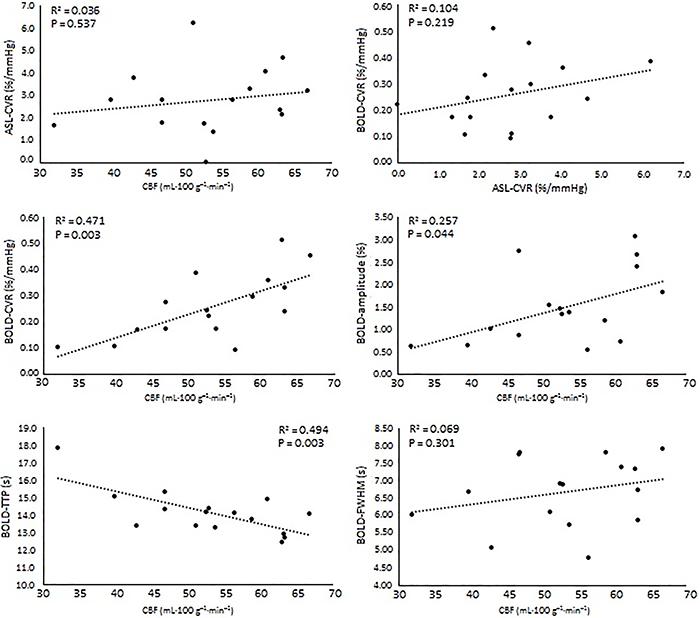Regional cerebral blood flow (CBF) and cerebrovascular reactivity (CVR) in young and elderly participants were assessed using pulsed arterial spin labeling (ASL) and blood oxygenation level-dependent (BOLD) magnetic resonance imaging (MRI) techniques in combination with inhalation of CO2. Pulsed ASL and BOLD-MRI were acquired in seventeen asymptomatic volunteers (10 young adults, age: 30±7 years; 7 elderly adults, age: 64±8 years) with no history of diabetes, hypertension, and neurological diseases. Data from one elderly participant was excluded due to the incorrigible head motion. Average baseline CBF in gray matter was significantly reduced in elderly (46±9 mL·100 g-1·min-1) compared to young adults (57±8 mL·100 g-1·min-1; P=0.02). Decreased pulsed ASL-CVR and BOLD-CVR in gray matter were also observed in elderly (2.12±1.30 and 0.13±0.06 %/mmHg, respectively) compared to young adults (3.28±1.43 and 0.28±0.11 %/mmHg, respectively; P<0.05), suggesting some degree of vascular impairment with aging. Moreover, age-related decrease in baseline CBF was observed in different brain regions (inferior, middle and superior frontal gyri; precentral and postcentral gyri; superior temporal gyrus; cingulate gyri; insula, putamen, caudate, and supramarginal gyrus). In conclusion, CBF and CVR were successfully investigated using a protocol that causes minimal or no discomfort for the participants. Age-related decreases in baseline CBF and CVR were observed in the cerebral cortex, which may be related to the vulnerability for neurological disorders in aging.
Arterial spin labeling; Blood oxygenation level-dependent contrast; Cerebral blood flow; Cerebrovascular reactivity; Hypercapnia; Magnetic resonance imaging






